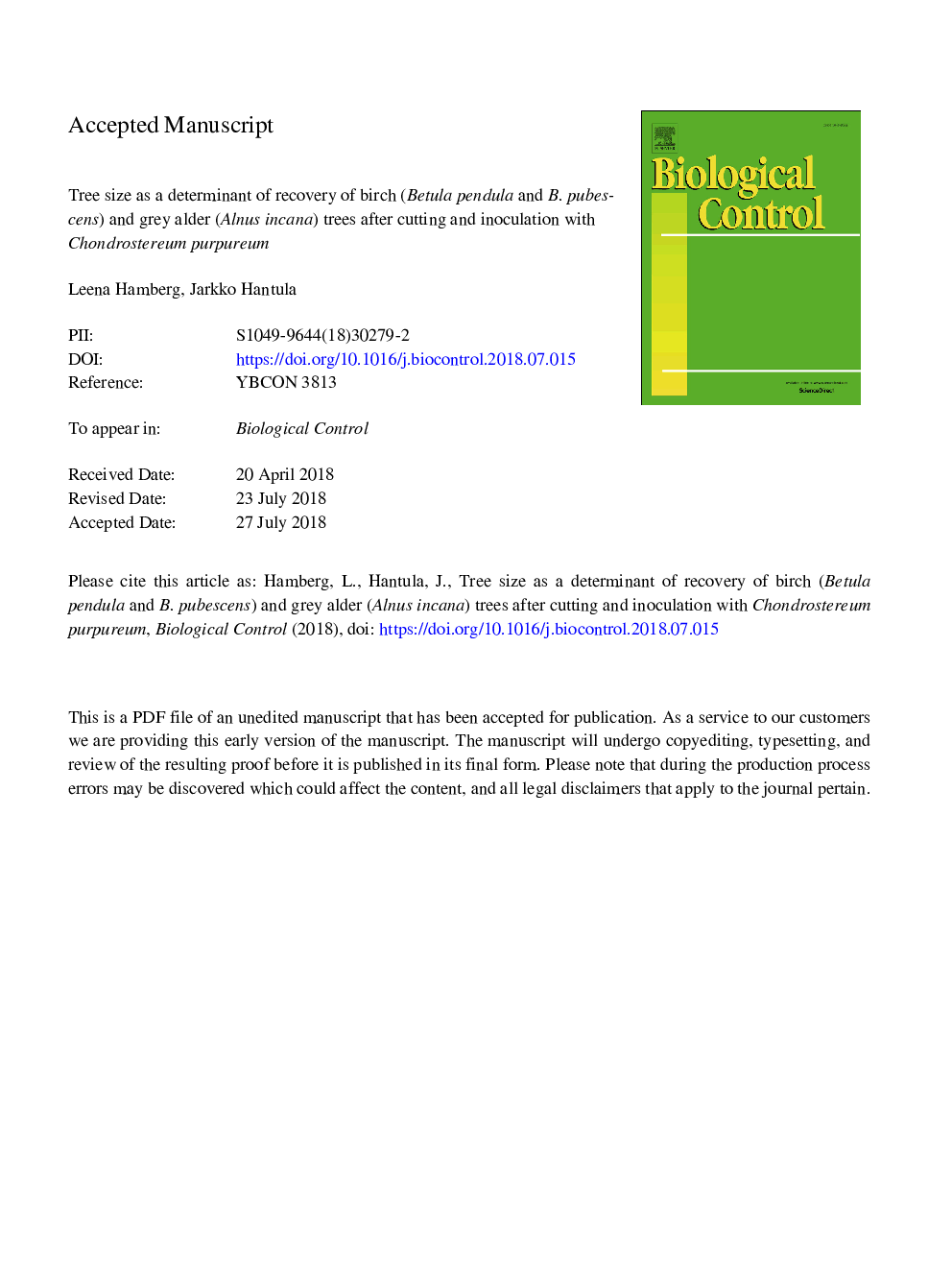| Article ID | Journal | Published Year | Pages | File Type |
|---|---|---|---|---|
| 8877504 | Biological Control | 2018 | 34 Pages |
Abstract
We investigated the ability of birch (Betula pendula Roth. and B. pubescens Ehrh.) and grey alder (Alnus incana (L.) Moench) trees of different sizes to recover after cutting and artificial infection with a common decay fungus, Chondrostereum purpureum (Pers. Ex Fr.) Pouzar. In birch, resistance to C. purpureum was initially highest among stumps of 13â¯cm diameter but by the end of the experiment almost all stumps were dead, whereas in grey alder mortality happened more slowly than in birch and was the same across the size range of stumps. After two growing seasons when almost all the original stumps were dead due to fungal infection, alder root suckers developed around small alder stumps, showing a high level of compensation compared to birch. These results indicate that birch and alder have different strategies for survival after biocontrol treatment.
Keywords
Related Topics
Life Sciences
Agricultural and Biological Sciences
Agronomy and Crop Science
Authors
Leena Hamberg, Jarkko Hantula,
